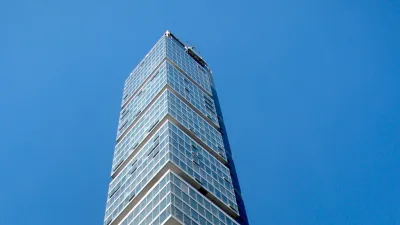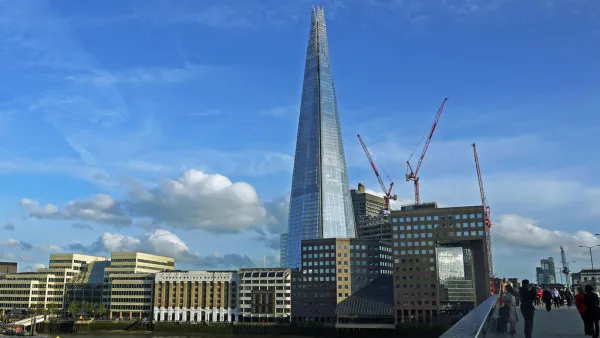Eliot Brown examines the global trend in skinny skyscrapers, as developers take advantage of technological advances and fatter wallets at the high end of the housing market to deliver stellar views.

In New York, Tel Aviv, and Vancouver tall thin towers are "sprouting like luxury beanstalks from small lots" for a clientele that can afford to subsidize their higher construction costs. According to Brown, "[f]ueling the drive toward slim living is an array of factors led by robust demand from the upper crust of the residential market willing to pay for premium views. Advances both in structural design and building materials have also made constructing skinny skyscrapers possible. In the end, higher prices mean developers can build on small sites that in the past wouldn't have allowed it."
"'If you can build more slender and higher, you can get more units with good views—and height is valued,' said Vancouver, British Columbia, developer Jon Stovell, who last year finished a 350-foot tower that has 4,850-square-foot floors."
"Building high, of course, gets expensive. As the floor count goes up, steel takes longer to lift and high winds can stall construction. Slender towers need a giant device, called a damper, toward the top to counter sway from wind. Without such features, buildings could rock to the point of making residents motion-sick."
"Technology has also helped give rise to the buildings," notes Brown. "For instance, the material of choice for apartment towers, steel-reinforced concrete, is more than twice as strong as a generation ago. Software in engineering offices can much better predict issues like how much a tower might sway, allowing for more efficient buildings with fewer columns," and of course, better views.
FULL STORY: Slim Pickings: The Rise of Skinny Skyscrapers

Analysis: Cybertruck Fatality Rate Far Exceeds That of Ford Pinto
The Tesla Cybertruck was recalled seven times last year.

National Parks Layoffs Will Cause Communities to Lose Billions
Thousands of essential park workers were laid off this week, just before the busy spring break season.

Retro-silient?: America’s First “Eco-burb,” The Woodlands Turns 50
A master-planned community north of Houston offers lessons on green infrastructure and resilient design, but falls short of its founder’s lofty affordability and walkability goals.

Test News Post 1
This is a summary

Analysis: Cybertruck Fatality Rate Far Exceeds That of Ford Pinto
The Tesla Cybertruck was recalled seven times last year.

Test News Headline 46
Test for the image on the front page.
Urban Design for Planners 1: Software Tools
This six-course series explores essential urban design concepts using open source software and equips planners with the tools they need to participate fully in the urban design process.
Planning for Universal Design
Learn the tools for implementing Universal Design in planning regulations.
EMC Planning Group, Inc.
Planetizen
Planetizen
Mpact (formerly Rail~Volution)
Great Falls Development Authority, Inc.
HUDs Office of Policy Development and Research
NYU Wagner Graduate School of Public Service


























